Case Studies.
Add Case Study
Our Case Study database tracks 22,657 case studies in the global enterprise technology ecosystem.
Filters allow you to explore case studies quickly and efficiently.
Download Excel
Filters
-
(6,653)
- (2,601)
- (2,127)
- (945)
- View all
-
(5,642)
- (2,469)
- (1,692)
- (826)
- View all
-
(5,571)
- (2,178)
- (1,766)
- (643)
- View all
-
(5,247)
- (2,179)
- (1,715)
- (1,321)
- View all
-
(2,881)
- (1,448)
- (574)
- (376)
- View all
- View all 15 Technologies
- (1,985)
- (1,985)
- (1,915)
- (1,679)
- (1,629)
- View all 42 Industries
- (8,728)
- (4,742)
- (3,618)
- (3,233)
- (2,947)
- View all 13 Functional Areas
- (3,304)
- (2,787)
- (2,603)
- (2,006)
- (1,630)
- View all 129 Use Cases
- (13,581)
- (5,296)
- (4,272)
- (3,520)
- (2,856)
- View all 9 Services
- (504)
- (432)
- (416)
- (382)
- (301)
- View all 1083 Suppliers
Selected Filters

|
Plausible Analytics Leverages ClickHouse for Privacy-Friendly Web Analytics
Plausible Analytics, a privacy-friendly alternative to Google Analytics, faced a significant challenge as it scaled its services. Since its launch in April 2019, the platform had grown to service over 5000 paying subscribers, tracking 28,000 different websites and more than 1 billion page views per month. However, the original architecture using Postgres to store analytics data was unable to handle the platform’s future growth. The loading speed of their dashboards was slow, taking up to 5 seconds, which was not conducive to a good user experience. The team realized that to continue their growth trajectory and maintain customer satisfaction, they needed a more efficient solution.
|
|
|

|
Lacework Boosts Pipeline with Intelligent Always-On Campaigns
Lacework, a cloud security platform, was looking to establish an account-based marketing (ABM) program. The company had a very targeted ideal customer profile (ICP), making ABM a suitable strategy. To build this program, Lacework hired Mandy Hanson, Director of Global Account-Based Marketing. Her task was to create impactful campaigns for Lacework’s top strategic accounts. However, the existing ABM platform was not delivering the desired results, prompting the need for a more effective solution.
|
|
|
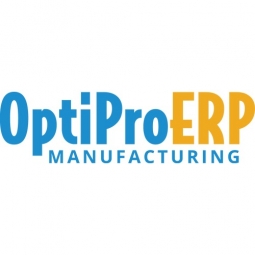
|
Qvella's Transition to Full-Scale Production with OptiProERP
Qvella Corp., a rapidly growing medical device company, was on the brink of transitioning from beta into full-scale commercial production. However, they lacked an Enterprise Resource Planning (ERP) system that could help them scale effectively. Their operations were highly regulated and mission-critical, requiring meticulous documentation and traceability. These processes demanded a system with robust functionality. The company had developed technology for the rapid detection of infectious agents in direct blood samples, aiming to reduce diagnostic time frames, lower costs, and ultimately save lives. Therefore, they needed an ERP system that could meet all regulatory standards such as FDA and MDSAP in an ISO13485 environment.
|
|
|

|
Cisco's Journey to Enhanced Customer Service with Celonis
Cisco, a leading provider of networking solutions, faced a significant challenge in maintaining its premium service processes. The company's products and capabilities are mission-critical for its customers, making customer support and service equally crucial. Any downtime in a customer's network could cost them thousands of dollars, making it imperative for Cisco to prevent such occurrences. Cisco held a significant market share in Ethernet switch revenue and the service provider and enterprise router market, making its responsibility even more substantial. The company was constantly striving to improve its processes, particularly its premium service options that promised two and four-hour delivery of replacements. The challenge was to identify delivery performance failures in real-time and prevent similar failures quickly. The existing processes were manual and labor-intensive, with a 'Process Quarterback' personally tracking all two-hour service delivery requests end-to-end.
|
|
|

|
Digital Sales Transformation at Dell through Process Mining
Dell Technologies faced a significant challenge in its sales process, particularly in the deal registration process. The company had two types of deal registration processes - one-step and two-step. The one-step process involved direct approval by the deal registration team, while the two-step process required approval from other relevant functions. However, Dell lacked the ability to differentiate between these two processes, leading to a lack of understanding of the volume and performance across them. This lack of visibility also impacted the wider business as Dell could not enforce the Service Level Agreement (SLA) commitments to the functions involved in the two-step approval process. The company needed a solution that could provide deep insights into their deal volumes and identify process elements suitable for automation.
|
|
|

|
HP's Transformation Journey with Celonis: A Case Study in Data-Driven Business Execution
HP's journey with Celonis began when the team recognized a need for a clear and detailed view of its processes. This need became apparent during a major operational crisis that arose from implementing a new SAP system. In some markets, it was a simple replacement of an old SAP order management system, but in others, a complete replacement of an old legacy tool was required. The turning off of the legacy system revealed that HP was not clear on exactly how its processes worked, particularly in their legacy systems. This led them to explore new and innovative techniques that could help them understand their processes better. However, the implementation of Celonis faced unique barriers due to HP IT team's unique requirements for connecting a tool to their systems. This led to several hurdles that questioned the worth of the implementation.
|
|
|

|
Transforming Accounts Receivable: Mars' Success with Celonis
Mars, the fourth largest private company in the US, was facing a significant challenge in managing its Accounts Receivable (A/R) process. The company was dealing with a high volume of deductions, but lacked clear visibility into the causes and sources of these deductions. This lack of insight made it difficult to tackle and reduce the deductions effectively. The challenge was further compounded when Nikki Nagel was appointed as Mars Accounts Receivable Transformation Lead. Despite her extensive experience in A/R roles, she was unfamiliar with process mining and the Celonis Execution Management System (EMS), tools that could potentially help address the deduction issue. Mars had three primary goals: reducing deduction inflow, increasing recovery rates, and reducing cycle times. However, without a clear understanding of the root causes of the deductions and the necessary technological expertise, achieving these goals was a daunting task.
|
|
|
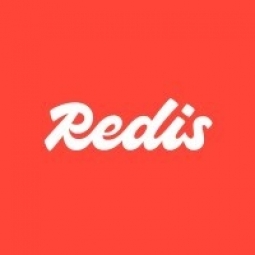
|
TELUS’ Optik TV Service Enhances Reliability with Active-Active Redis
TELUS, one of Canada’s leading telecommunications companies, faced significant challenges with their Optik TV service, specifically with their customer-facing application, Showcase. The application, which acts as a central hub of personalized content for Optik TV customers, was initially built on Redis open source. However, TELUS experienced an outage that negatively impacted the customer experience, leaving key menu options unavailable and requiring significant time to fully restore all services. The outage put the Showcase service on standby for a full day, resulting in a hampered user experience that lasted up to 24 hours. The incident raised concerns among the leadership about the reliability of the existing system and the need for a more robust solution.
|
|
|

|
Redis Enterprise on Google Cloud: Powering Ulta Beauty's Digital Transformation
Ulta Beauty, a leading U.S. beauty retailer, faced a significant challenge during the COVID-19 pandemic. The rapid growth of online shopping necessitated a renovation of its e-commerce presence and a shift towards a more efficient, cloud-based architecture. The company needed a versatile, scalable, and powerful in-memory database that could support a microservices architecture and offer robust caching capabilities. The goal was to manage the rapid growth and create a cohesive customer experience, both online and in its retail stores. The company also aimed to transition from an old business model, based on legacy applications and on-premises information systems, to a more sustainable IT infrastructure that could quickly migrate to the cloud.
|
|
|
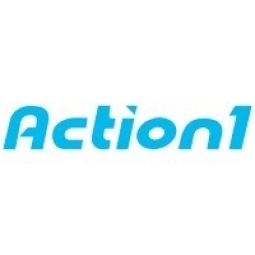
|
Essential Tech Support Enhances IT Efficiency with Action1, Saving 125 Hours Monthly
Essential Tech Support, a managed service provider (MSP) based in Baltimore, Maryland, was facing significant challenges with its existing remote monitoring and management (RMM) software, Syncro. The company, which provides technology support for schools, churches, and nonprofits, had five technicians managing 250 Windows endpoints and several thousand other devices. The Syncro software was proving to be too cumbersome, particularly due to its heavy reliance on scripting. This would have necessitated the hiring of a dedicated scripting expert, an additional cost for the company. Moreover, patch management was a complex process, requiring the team to create numerous workarounds to ensure all necessary patches were installed on the devices. The CEO and co-founder, Ian Holub, began searching for a more efficient and user-friendly alternative to Syncro, having previously tried Kaseya and Zoho without success.
|
|
|

|
Streamlining IT Operations: A Case Study on The Pantry Catering and Action1
The Pantry Catering, a family business based in Middlesex, UK, was facing a significant challenge as their business expanded. The number of PCs that the IT team, led by IT Manager Peter Boden, needed to manage and secure was increasing. This growth made it increasingly difficult for the team to efficiently deploy software to the machines and keep them properly updated and patched. The team was in need of a comprehensive platform that could streamline their daily IT routine. The solution had to be easy to use and effective, as the team was small and did not have a lot of free time to configure a complex tool and learn how to use it.
|
|
|
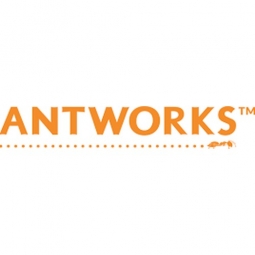
|
Airline Company Streamlines Invoice Processing with AI
The customer, a leading low-cost airline in East Asia, was grappling with the challenge of processing approximately 2,000 invoices each month, each ranging from 100 to 200 pages in length. The invoices, coming from over a thousand suppliers, arrived in a wide array of formats. The task of manually extracting data from each invoice and processing it into the airline's BPM system was repetitive and time-consuming. The addition of new destinations only increased the volume of suppliers and invoices, further complicating the process. The airline's pre-existing OCR platform struggled with the variability of the invoice formats and required constant intervention. The frequent changes to these documents made a template-based automation approach difficult. The company was in need of an AI-based solution that didn't require data science expertise.
|
|
|
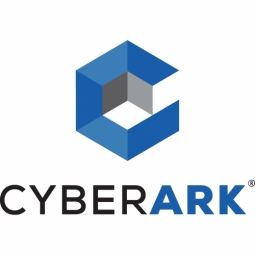
|
Garanti BBVA Enhances Security Infrastructure with CyberArk
Garanti BBVA, Turkey’s second-largest private bank, faced a significant challenge in securing its privileged accounts and identities used in its DevOps and cloud environments. With a broad attack surface due to its extensive business lines and 18,000 employees, the bank needed to protect against the theft of privileged credentials. The bank also had to ensure compliance with stringent data security regulations within both the Turkish and global financial sectors. As one of the pioneers of internet banking in Turkey, Garanti BBVA was pushing forward its digital transformation journey, which increased its in-house development operations (DevOps) to improve application and service delivery. This transformation resulted in a need for more robust security tools.
|
|
|
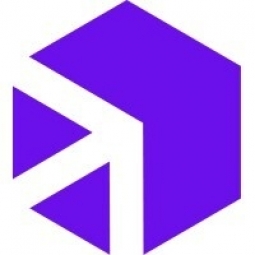
|
Bauducco's Successful EDI Integration with U.S. Customers via Digibee
Bauducco, a part of the largest manufacturer of baked goods in Brazil, Pandurata, faced a significant challenge in integrating with its U.S. customers through Electronic Data Interchange (EDI) files. The company was looking to replace its current Value-Added Network (VAN) integration for a more sustainable, long-term solution. The existing system was plagued with manual input and data errors, which Bauducco aimed to eliminate. The company also sought to enhance its integration process through the implementation of alerts and error handling mechanisms. The challenge was not only to streamline the integration process but also to increase its efficiency and accuracy.
|
|
|
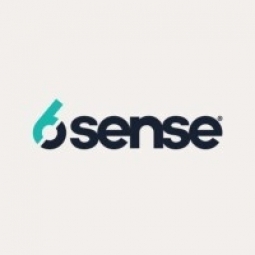
|
Revitalizing Aprimo: A Case Study on Strategic ABM Implementation
Aprimo, a company that develops and sells marketing resource management and digital asset management technology, faced a significant challenge after reemerging into the market in 2016. Despite having a history of 20 years and a large customer base, the company had zero brand awareness due to being hidden under a different name for five years. They were essentially operating as a startup, rebuilding their product and transitioning to a SaaS company in the cloud. Everything was new, from analyst relations to their team, their website, and the martech stack they would be using. Additionally, Aprimo was facing stiff competition from industry giants. They were struggling to strategically and surgically execute their marketing tactics due to a lack of prioritization and targeting of accounts that were actually in-market. Their account selection and pipeline acceleration strategies were based on firmographics, ICP, and their sales team's gut reactions, which were not always accurate or effective.
|
|
|

|
Berkeley County School District Enhances Student Safety and Streamlines Parent Communication with IoT
Berkeley County School District in West Virginia, responsible for transporting over 17,000 students daily, faced significant challenges in ensuring student safety and efficient communication with parents. The district had limited visibility into the real-time location of their school buses, making it difficult to monitor and respond to safety concerns. Their existing camera system offered only basic functionality, and retrieving footage was a time-consuming process. This lack of real-time visibility made it difficult to detect and address risky driving behaviors. Furthermore, parents often raised concerns about school bus delays and student safety, but due to the lag time from their legacy GPS vendor, the district was unable to provide accurate and timely information. Each safety concern call took up to 15 minutes to investigate, highlighting the need for a more efficient solution.
|
|
|

|
Brothers Food Services Enhances Safety and Efficiency with Site Visibility
Brothers Food Services (BFS), one of the largest produce distributors in Texas, faced a significant challenge in maintaining employee safety across their vast operations. With over 500,000 square feet of warehousing space spread across four main distribution centers, BFS needed a system that could streamline incident investigation and save labor hours. Their previous camera systems were time-consuming and inefficient, often taking hours to locate the correct video footage for incident investigation. This reactive approach was not only labor-intensive but also hindered their ability to promptly address safety incidents.
|
|
|

|
Enhancing Efficiency and Compliance in Atlanta's Aviation Department through IoT
The City of Atlanta's Department of Aviation is tasked with maintaining the vast land surrounding the Atlanta Airport, the busiest airport globally. A critical part of this maintenance involves keeping the grass mowed to a specific height as per FAA regulations to prevent attracting wildlife like birds, which pose a safety risk to aircraft. However, the department faced significant challenges in ensuring this compliance due to limited visibility into the mowing operations. They relied on manual work orders and line-of-sight supervision, which did not provide any means to confirm whether the grass was mowed correctly or even mowed at all unless a supervisor was physically present to oversee the process.
|
|
|

|
Improving Driver Safety with IoT: A Case Study on Foundation Building Materials
Foundation Building Materials (FBM), one of North America's leading distributors of building materials, prioritizes safety as its core value. With a fleet of 4,500 vehicles and heavy equipment, and over 5,500 employees across 270+ branches, maintaining driver safety and training is a significant challenge. As the company grew, it faced difficulties in scaling its safety programs due to the limitations of its legacy telematics and scheduling systems. These systems were not integrated with their driver safety program, making it challenging to gain insights into driver performance. The need for better technology to enhance visibility into driver performance and safety became increasingly apparent.
|
|
|

|
Papa & Barkley's Transformation of Onsite Operations with Samsara Site Visibility
Papa & Barkley, a cannabis manufacturer and distributor, faced significant challenges in managing their facilities. With four different facilities primarily located in Eureka, California, they had to adhere to strict safety requirements and specialized regulations for the cannabis industry. This necessitated real-time visibility and facility security. To ensure compliance and safety, they employed Facility Intelligence Coordinators (FICs) to monitor their operations 24/7 using a legacy camera system. However, with 167 cameras monitoring a collective 79,000 square feet, manually reviewing footage was time-consuming and led to burnout among the FICs. Additionally, the City of Eureka and the state of California conducted surprise inspections, for which retrieving video footage was essential. Before Samsara, finding the right footage could take hours. As a rapidly growing company, Papa & Barkley needed an onsite camera system that could streamline their processes and scale with them.
|
|
|

|
Enhancing Technician Safety and Operational Efficiency: A Case Study on Satellites Unlimited
Satellites Unlimited (SUI), a leading regional service provider for a major national satellite company, was facing significant challenges in building a cutting-edge safety program. The company's safety program was largely based on anecdotal evidence from technicians and managers, which did not allow them to reliably identify the root cause of safety incidents. This became a pressing issue when SUI experienced two catastrophic vehicle incidents, resulting in multi-million dollar worker’s compensation claims. The company was aware of issues such as tailgating and distracted driving, but lacked the means to prove it. Therefore, SUI sought a solution that would provide an unbiased source of truth about what was happening in the cab when technicians were out on the road.
|
|
|

|
Van der Linden Enhances Driver Safety and Avoids Fines with Samsara
Van der Linden, a 125-year-old road transportation company based in the Netherlands, was facing a significant challenge due to outdated systems. The company, which specializes in dedicated delivery services, was struggling to monitor driver hours and maintain compliance with EU rules. In the Netherlands, if a driver is fined for driving too many hours without observing the mandatory rest periods, the employer is required to pay a fine double that amount. With the minimum fine for drivers set at €220, Van der Linden was at risk of incurring substantial costs from non-compliance across its growing fleet. The company's traditional method of drivers clocking in with timecards and manually reporting monthly truck data was proving to be inefficient and error-prone.
|
|
|
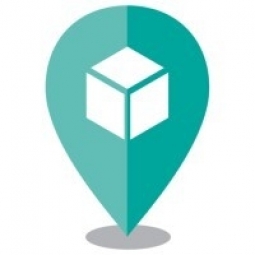
|
Optimizing Furniture Delivery with IoT: A Case Study on Castle Davitt Furniture
Castle Davitt Furniture, an Irish family-operated business, faced significant challenges in their delivery process. The company was struggling with the daily planning of their deliveries, wasting considerable time on manual route planning. They were using Google Maps for planning routes, which imposed limitations such as a maximum of 10 stops per route and no provision for adding factors like wait times at each delivery or vehicle capacity. This led to inefficient routes, with drivers often passing by homes that were due for delivery later in the day, resulting in unnecessary fuel consumption and time wastage. Another challenge was the time-consuming process of notifying customers about their orders. The team had to manually go into each order on their EPOS system and send out individual notifications, which was a drain on valuable time.
|
|
|

|
Enhancing Grocery Home Delivery: A Case Study on Musgrave's Implementation of SmartRoutes
Musgrave, a leading food retail, wholesale, and food service company in Ireland, faced challenges in managing its grocery home delivery service across its 10 SuperValu stores. The company was using routing software in four of its larger stores, but it lacked essential features like a driver app, leaving them without a direct link to their drivers. In the remaining six stores, the delivery planning was done manually using a 'Daily Delivery List'. Drivers would scan the list, discuss the routes among themselves, and then decide which orders to take based on their local knowledge. This process was time-consuming and lacked efficiency. Furthermore, drivers would sometimes contact customers to check if they could deliver their orders earlier to group nearby orders together. Musgrave aimed to improve the delivery experience for their customers, gain more control and visibility over their delivery operations, reduce the time spent on manual route planning, and ensure deliveries were completed within the chosen delivery windows.
|
|
|

|
Automated Vehicle Registration Verification for a Leading Indian NBFC
The client, an Indian Non-Banking Financial Company (NBFC), was facing challenges in processing vehicle loans for millions of customers across the country. Before disbursing the loan, the client had to hypothecate the vehicle, which required detailed information about the vehicle. This data had to be manually fetched from government websites and applications, a process that was not only time-consuming but also prone to errors. This manual process reduced the overall productivity of the employees and increased costs. The client was seeking a solution to automate the process of collecting data and registering vehicles to increase overall efficiency.
|
|
|
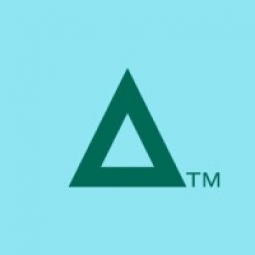
|
Enhancing Security and Compliance in Banking: A Case Study of Merchant Bank of Sri Lanka & Finance
Merchant Bank of Sri Lanka & Finance PLC (MBSL) is a leading financial service provider in Sri Lanka, with over 40 branches across the country. The bank's core banking system is the IBM i, a powerful operating system known for its robust security mechanisms. However, the bank faced challenges in ensuring maximum security and compliance, particularly in mitigating the risk of internal security breaches caused by powerful users or administrators. The bank also needed to comply with the Baseline Security Standard and Regulatory Framework on Technology Risk Management and Resilience for Licensed Finance Companies issued by the Central Bank Sri Lanka (CBSL). Furthermore, MBSL needed greater control and visibility into user activities, such as accessing, downloading, and uploading data. The bank also faced challenges in managing access to sensitive data, reducing the time spent on password resets, and generating audit reports efficiently.
|
|
|
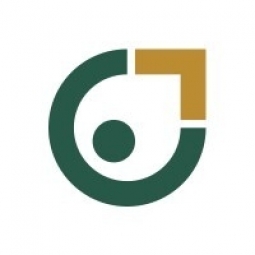
|
Automation Revolutionizes Employee Onboarding in Global Professional Services Firm
A leading global professional services firm was grappling with the challenge of high processing time for new hires, particularly during peak onboarding seasons. The firm was heavily reliant on traditional manual onboarding processes carried out by their HR, IT, and facilities teams to recruit their clients' contract resources. This reliance on manual processes made the onboarding experience clunky and inefficient. The onboarding process is crucial to a new hire's success and longevity within the organization, and this is even more critical for remote employees who have fewer opportunities to organically integrate into the company processes and culture.
|
|
|
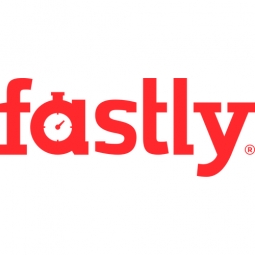
|
Scaling EdTech: Skillsoft's 400% Video Traffic Increase Managed by Fastly
Skillsoft, a leading EdTech company, faced a significant challenge when its traffic surged by 400% in a short span of time due to the COVID-19 pandemic. The company, which serves content to 45 million learners in over 160 countries, saw its traffic double between February and March 2020, and then double again from March to April. This sudden spike in demand had the potential to seriously degrade user experience, which is a key factor in EdTech success. Additionally, Skillsoft was also experiencing growth due to global expansion, particularly in India where the EdTech market is expected to quadruple over the next five years. Already, 20% of Skillsoft's traffic was coming from India, and this number was growing.
|
|
|

|
SeenThis Leverages Fastly for High-Speed, Sustainable Ad Streaming
SeenThis, a Stockholm-based ad streaming company, was facing a series of challenges. The company, which works with 80 of the top 100 advertisers in over 40 countries, was dealing with an average of 40 billion requests per month from over 1,000 customers. Their proprietary adaptive streaming technology was designed to remove the limitations of conventional ad serving technology, but they were struggling with their existing content delivery network (CDN) which couldn't provide the necessary configuration for delivering custom content based on different variables. Additionally, their previous logging and monitoring system began showing signs of aging by 2018, becoming slow and unreliable. The team struggled to manage the increasing number of requests required to serve its customers. Furthermore, when data transfer reduction emerged as a pressing environmental concern in 2020, SeenThis needed more detailed reporting capabilities to evidence their unique mix of performance and sustainability.
|
|
|

|
Fastly's CDN and WAF Solutions: A Case Study on Spread Group's Tech-Driven Fashion and Lifestyle
Spread Group, a global fashion and lifestyle provider, faced a significant challenge in maintaining its global scale and converting online clicks into physical products. The company, which operates three distinct brands, needed to weave delivery with security to ensure the smooth operation of its platform. With over 6.17 billion average monthly requests, finding a Content Delivery Network (CDN) to supercharge delivery was a top priority. Additionally, Spread Group needed a robust Web Application Firewall (WAF) that could work in harmony with its constantly evolving platform. The company had a good, internally developed security monitoring and observability infrastructure, but it was not viable long-term. A flexible WAF that could run in blocking mode was needed to provide more time to modernize vulnerable legacy components.
|
|




